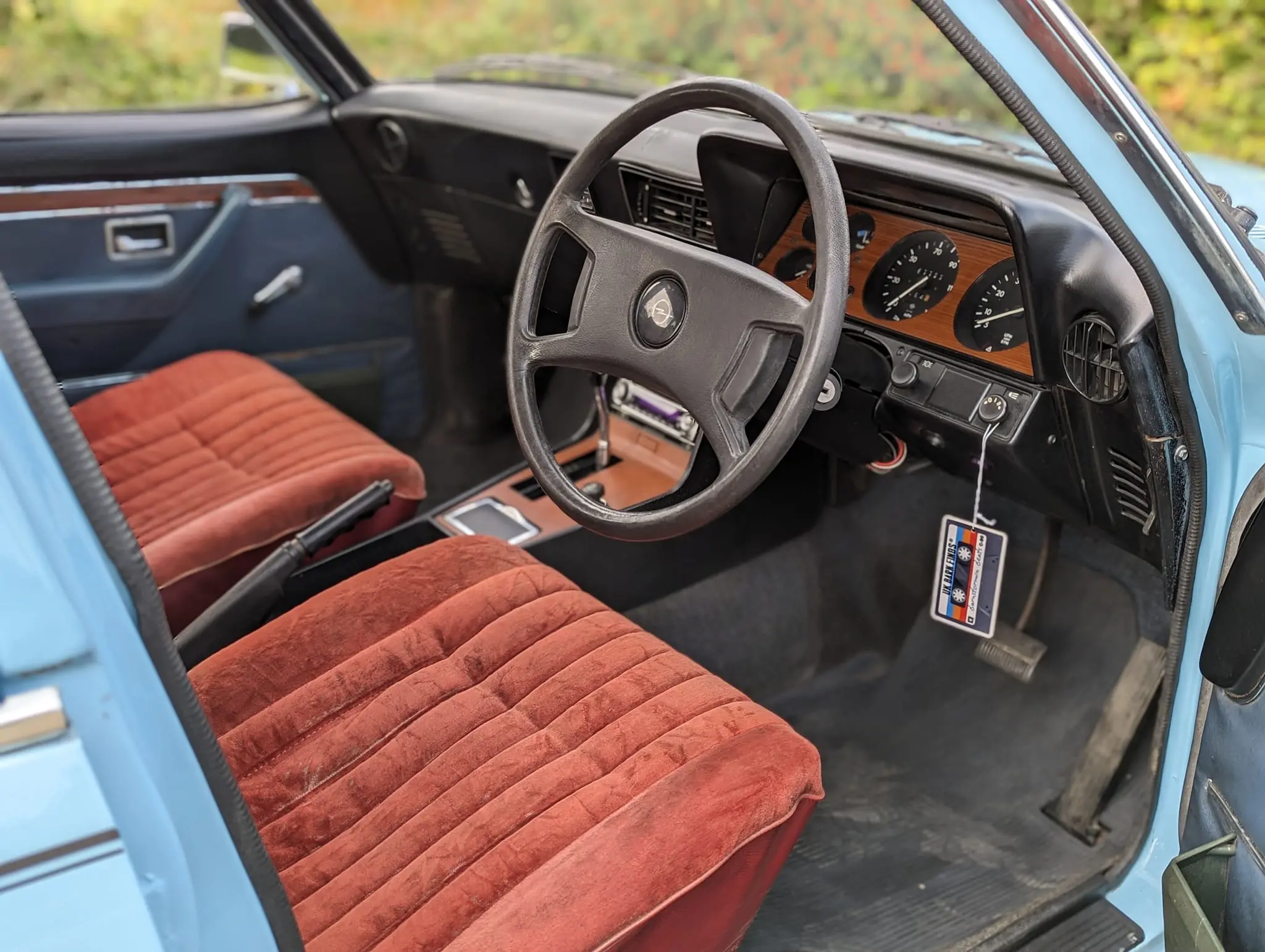MEET THE OWNER – ELTON MURPHY AND HIS OPEL COMMODORE GS
02 October 2023
Just take a look at the veloured magnificence of that interior, with wooden decorations reminiscent of a top-of-the-range hostess trolley. Then, marvel at the vinyl roof, the matt black grille and those elaborate wheels. Elton Murphy’s Type B Opel Commodore GS is a very exclusive machine, the sort of car that should be driven by Stephen Greif or any other actor who played sun-shaded villains in 1970s television programmes,
The Commodore was indeed an exclusive machine in the UK; at £3,099.56 in 1974, it was £278 more expensive than a Ford Granada Ghia and cost £378 more than an Audi 100 GL. When Car tested the Opel, they thought it had better performance, fuel economy, interior space, and handling than the Ford. However, whether such good points made it better value was debatable. But a rival publication stated, “Virtually every member of Motor’s staff who drove it said that it would be his choice of £3,000 sporting saloon”.

The first Commodore A debuted in 1967 as a more powerful and luxurious version of the Type C Rekord. While the former rivalled the Ford Taunus 20M, the latter set its sights on the BMW Neue Klasse and, by 1968, the Mercedes-Benz W114. The Type D range succeeded the C in 1971, and the Commodore B saloon now featured either 2.5-litre or 2.8-litre engines, the latter from the vast Admiral saloon.
The latest Rekord/Commodore also shared part of their floorpan with Vauxhall’s Victor/Ventora FE range, which made their bow in 1972, but the two ranges had separate identities. They also appealed to different types of owners; the motoring writer Frank Page thought the Opels were “handier to drive fast”, while the Vauxhall’s softer ride would appeal to many British motorists. Some potential buyers noted the rigid rear axle, compared with the new Granada, but Opel’s chef engineer stated that while they had trialled IRS, the results did not justify its use.
Post-war Opel sales in the UK began in 1967, and until 1981, they had their own dealership chain. The nearest Luton equivalent to the Commodore was the 3.3-litre Ventora. However, if the Vauxhall was transport for the senior manager, the Opel was for the MD; AC Delco directors used Commodores as company cars. One brochure told prospective buyers, “The only thing your chauffeur will not like about it is that he will never get to drive it”.

Elton runs UK Barn Finds, so naturally, he could not resist the Commodore’s many charms. He finds:
The car drives well, especially considering its age, and the straight-six engine has plenty of grunt if you want to add a bit of grin to your day. It’s probably juicy when you do that, which is why I’ve not bothered to calculate the MPG! The car draws a lot of attention when it’s out and about. Albeit, this is often from some people who think it’s a Ford at first! Most people have never seen one of these, so I guess we can forgive them.
The Murphy Commodore, as well as being very handsome in a ‘Return of the Saint villain’ fashion, also represents the last days of individual Opels and Vauxhalls. As The Observer of the 2nd July 1972 noted:
Bearing in mind the build-up of General Motors’ new European organisation, this may be the last time two plants are permitted the expensive luxury of producing similar but non-interchangeable models.
It was a perceptive comment for when Opel launched the replacement Rekord E 1977, a Vauxhall-badged Carlton version followed in 1978 to replace the FE. For the socially ambitious, there was the Opel Commodore C, also sold in this country as the short-lived Vauxhall Viceroy.
Today, the Murphy Opel is an exceedingly rare machine – most of the surviving Commodore Bs in the UK is the Coupe version. And if you caught sight of one on an upmarket driveway, you instinctively knew the owner was the sort of person who could afford to serve After Eight Mints on a regular basis.
With Thanks To – Elton Murphy
